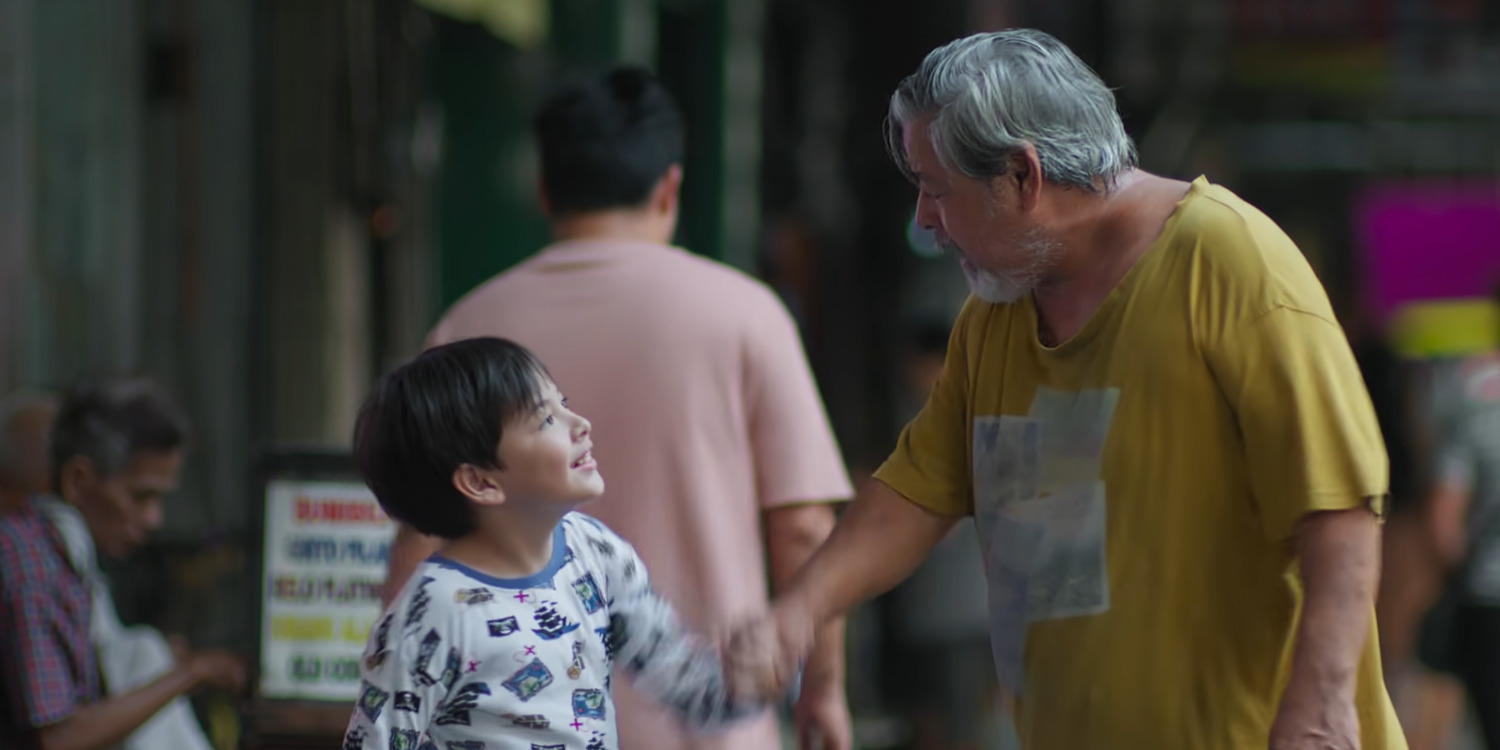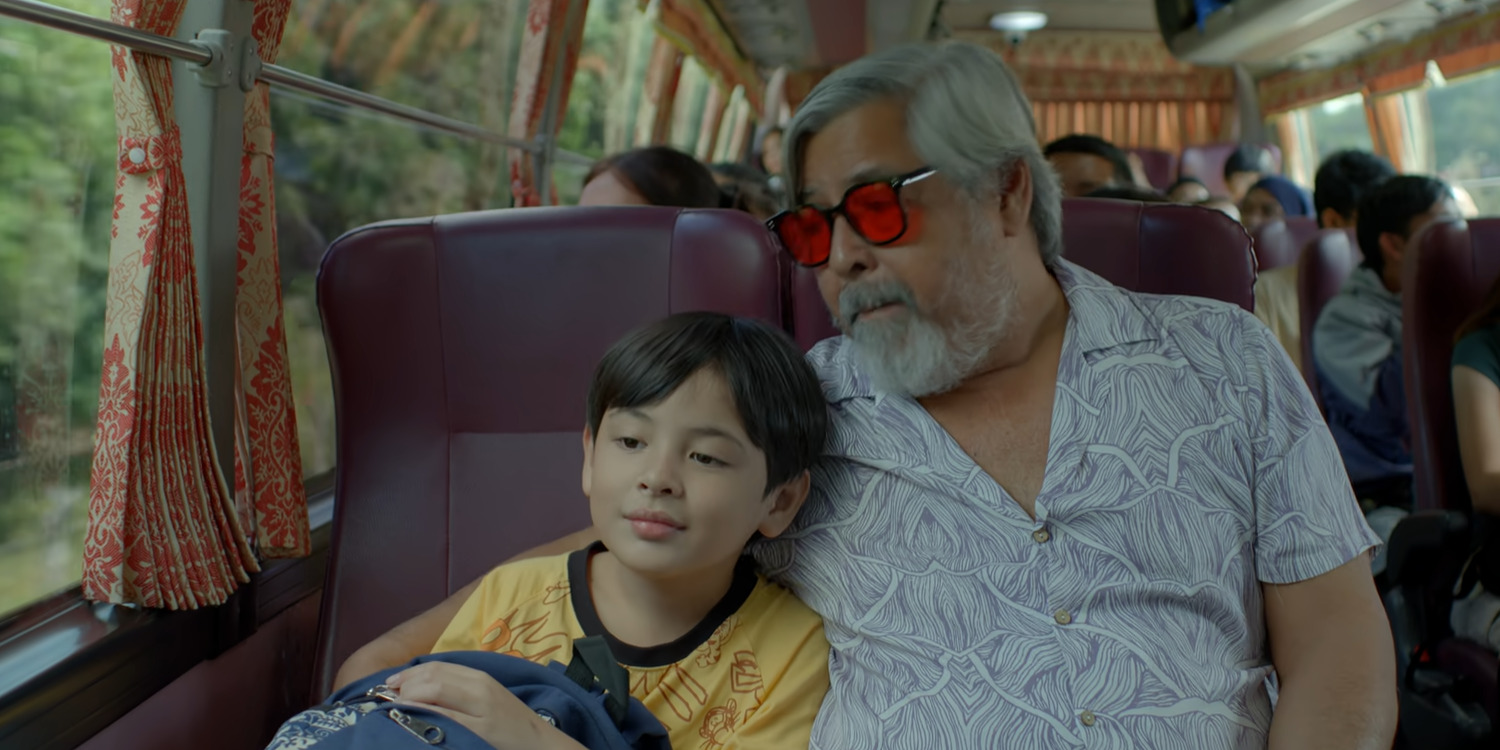Netflix’s Filipino film ‘Lolo and The Kid’ revolves around the unconventional yet emotionally touching relationship between a young homeless child and Mario (Joel Torre), a grandfather figure in the former’s life. Despite living on the streets with little means, the young kid and his Lolo (translation: grandfather) Mario strive to seize each day and live in the moment. Therefore, the duo begins scamming wealthy couples without children of their own, exploiting their desperation to steal from them and earn a shiny buck.
Although they’re able to get by swiftly by swindling numerous pairs, Mario can’t help but wonder if such a lifestyle is healthy for the young kid. Consequently, once an opportunity for change appears, he contemplates breaking the young boy’s heart to save his life. Although Mario and Kid’s narratives remain a prominent depiction of hope and humanity, they also present a unique dive into the despairing reality of homelessness and its adverse effects on young individuals. As such, it is natural for many to question whether the duo’s distinct hustle is based on a true story.
Lolo and The Kid: A Quirky Pair of Fictionalized Scammers
Directed and written by Benedict Mique, ‘Lolo and The Kid’ begins as a tale about a grandfather-grandson duo who regularly hustle kind-hearted strangers by playing to their sensitivities. Although adoption scams are an unfortunate reality in the Philippines and elsewhere in the world, there aren’t any records of low-level, concentrated scams occurring in real life that mirror Mario and Kid’s stories. As such, the characters, their harmful hijinks, and epiphanic life lessons are all a product of Mique’s creative imagination with no solid basis in real life.

At its core, the film centers its narrative around the titular dual protagonists’ treasured bond, which shoulders the majority of the story’s emotional significance. Therefore, the heartwarming dynamic between Kid and his Lolo channels most of the film’s emotional authenticity by molding both fictional characters in a realistic light. Joel Torre, the veteran actor with years of experience under his belt—who embodies Mario’s character—spoke about the same in an interview with Philstar Global.
“They say that grandparents are there to spoil their grandchildren,” said Torres. “The relationship of a Lolo [Filipino for grandfather] and his grandkid is different from that of a parent and a child, which is true. There is an umbilical cord, may it be invisible, but you’re attached to that love, to that relationship.” Consequently, an intrinsic part of the storyline remains dependent upon the chemistry and rapport between Torres and his young co-star, Euwenn Mikael Aleta. Fortunately, a seamless dynamic was formed between the two inter-generational actors, allowing them to bring the profound relationship between their characters to the screen.

As a result, Mario and Lolo’s narratives resonate deeply with the audience as they explore the selfless and sacrificial nature of familial love. “A universal language in movies, in any story, is about family,” Torres said in a conversation with ABS CBN News. “So family—that’s basically what keeps us together. This is a family story not by blood but by affinity. So it’s a family love story.” Thus, despite lacking a basis in real scammers, Lolo Mario and Kid’s characters were able to tap into the universal aspects of their relationship to ensure authenticity within their fictionalized tales.
The Narrative Touches Upon Homelessness in the Philippines
Even though ‘Lolo and The Kid’ does not set out to chart a real-life inspired tale, one of its central themes remains a compelling depiction of an actual social issue prevalent in reality. Mario and Kid’s socio-economic lifestyle as homeless individuals brings attention to the same global crisis overtaking the Philippines in real life. According to a World Population Review study built on data from the Organization for Economic Development, the Philippines ranks ninth in terms of countries with the largest homeless population.

The reports signify that there are 4.5 billion homeless individuals in the country, with around two-thirds of this population residing in Metro Manila. As such, ‘Lolo and The Kid’s’ depiction of the struggles that the central characters face—regarding finances and education—from a young age remains reminiscent of real life. Likewise, its periodic references to other less fortunate kids or homeless individuals who fall victim to drug abuse note the all-too-regular commonality of their situation in real life. Furthermore, Mario’s helplessness as an older man who had spent his entire life on the streets emphasizes his situation’s trapped, hopeless nature.
On the other hand, Kid’s narrative presents an idyllic fantasy of an opportunity that presents an individual with the ability to escape his impossible situation. The emotional conflict born from the clashing of these two narratives forms the story’s nucleus, encouraging the audience to empathize with the reality of homelessness. Therefore, even though Mario and Kid aren’t cinematic counterparts of real people, their narrative reflects a realistic social issue. For the same reason, the film ends up sporting a prevalent social message that is rooted in reality. Yet, outside of the same, the film holds no other connection to real life, rendering itself a fictionalized tale.
Read More: Best Filipino Movies on Netflix


You must be logged in to post a comment.